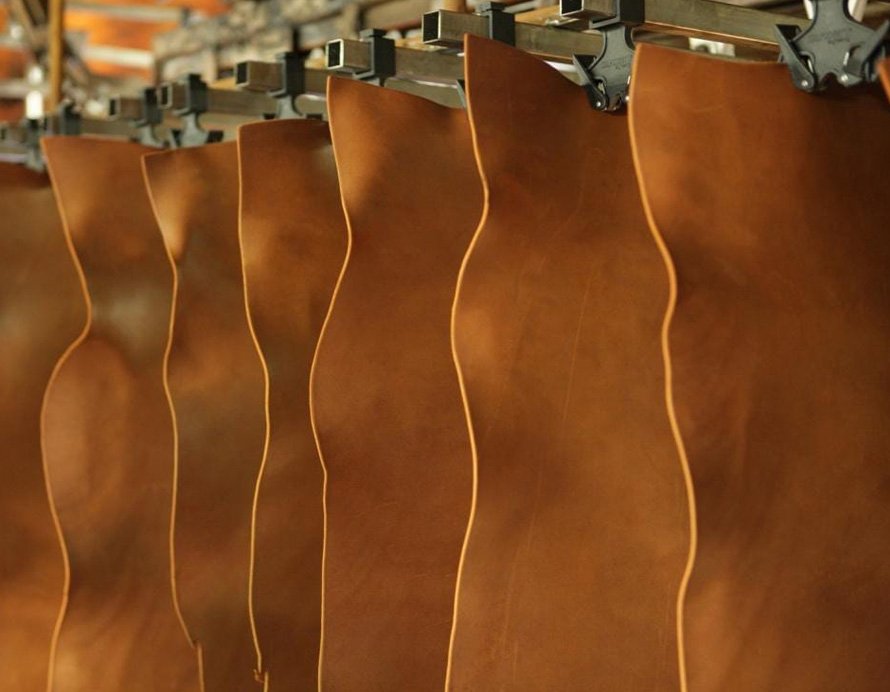Material Guide: Apple Leather
Photo: Apple Leather
By Mia Barnes
You want to keep up with the latest fashion trends but also care about the planet. However, you know that leather comes from animals used in meat production, an industry (global livestock) responsible for 14.5% of global greenhouse gas emissions. If you seek a sustainable alternative, consider apple leather as a base material.
A Sustainable Use for a Common Agricultural Byproduct
Where does apple leather come from? When farmers in the Tyrol region of northern Italy grow apples, they go big. They produce copious harvests to make jams and jellies, producing tons of solid waste. However, taking the leftover peels, cores and pulp and blending them with polyurethane creates a long-lasting, water-resistant fabric that has a similar feel and consistency to leather made from animal products. It solves several problems in the process. Traditional leather comes from beef cattle. Additionally, it requires considerable processing, which takes energy. Apple leather uses fewer fossil fuels to run the machines for creating it.
It also decreases agricultural waste by making the highest and most efficient use of available resources. The organic material left over from making jams and jellies would otherwise be sent to landfills. Unfortunately, conditions there don’t support the aerobic breakdown of organic materials, resulting in methane production. This greenhouse gas is several times heavier than carbon dioxide, harming the environment.
Downsides to Apple Leather
One downside to apple leather is polyurethane blends do not biodegrade, meaning items made with it will eventually end up in landfills. However, the material produced by the Italian company Mabel is compostable and utilized by manufacturers like Luxtra, Sylven and Mela.
Recipient of the PETA-Approved Vegan Label
Apple leather is so sustainable and animal-friendly that PETA recently awarded its vegan label to several products. For example, they recently featured LaBante London, which recently released a line of apple leather sneakers. They double down on sustainability with laces made from recycled plastic bottles and soles from a recyclable plant-based rubber.
Apple leather is also:
● USDA Bio-preferred approved: This organization certifies that the product contains the
biobased content shown on the label.
● OEKO-TEX certified: This organization certifies textiles free of harmful toxins.
Photo: Apple Leather
Common Uses for Apple Leather
What kind of products do manufacturers design with apple leather? You can use it for many of the same purposes as traditional leather. It’s excellent for:
● Shoes
● Briefcases
● Wallets
● Belts
● Handbags
● Jackets
Is Apple Leather Waterproof?
Regular leather can become stained and damaged from water. Apple leather, conversely, is water resistant. While you shouldn’t submerge products made from it in water, you can wipe away excess fluid without damaging the material. Keep that in mind if you’re the type to set your handbag on the bar and occasionally tip over your drink.
Where to Buy Apple Leather
You can buy apple leather wherever you buy fashion wear. Here are five designers who feature
this sustainable fabric alternative:
● Dooey’s: Perhaps the world’s most comfortable walking shoes.
● Veerah: Fashion footwear in various styles.
● Allegorie: Handbags and backpacks for fashionistas.
● Good Guys Don’t Wear Leather: Fun shoes with a casual flair.
● Marhen J.: A fully vegan accessory line.
Your Guide to Apple Leather
If you’re looking for new shoes or a handbag, perhaps you should consider apple leather. This material gets high marks for sustainability and is a durable product that lasts. In the coming months, look for apple leather to replace the traditional kind in more shoes and handbags.
Mia Barnes is a freelance writer with a passion for eco-freindly wellness and sustainability. Mia is also the Founder and Editor-in-Chief of Body+Mind magazine, an online healthy living publication.


